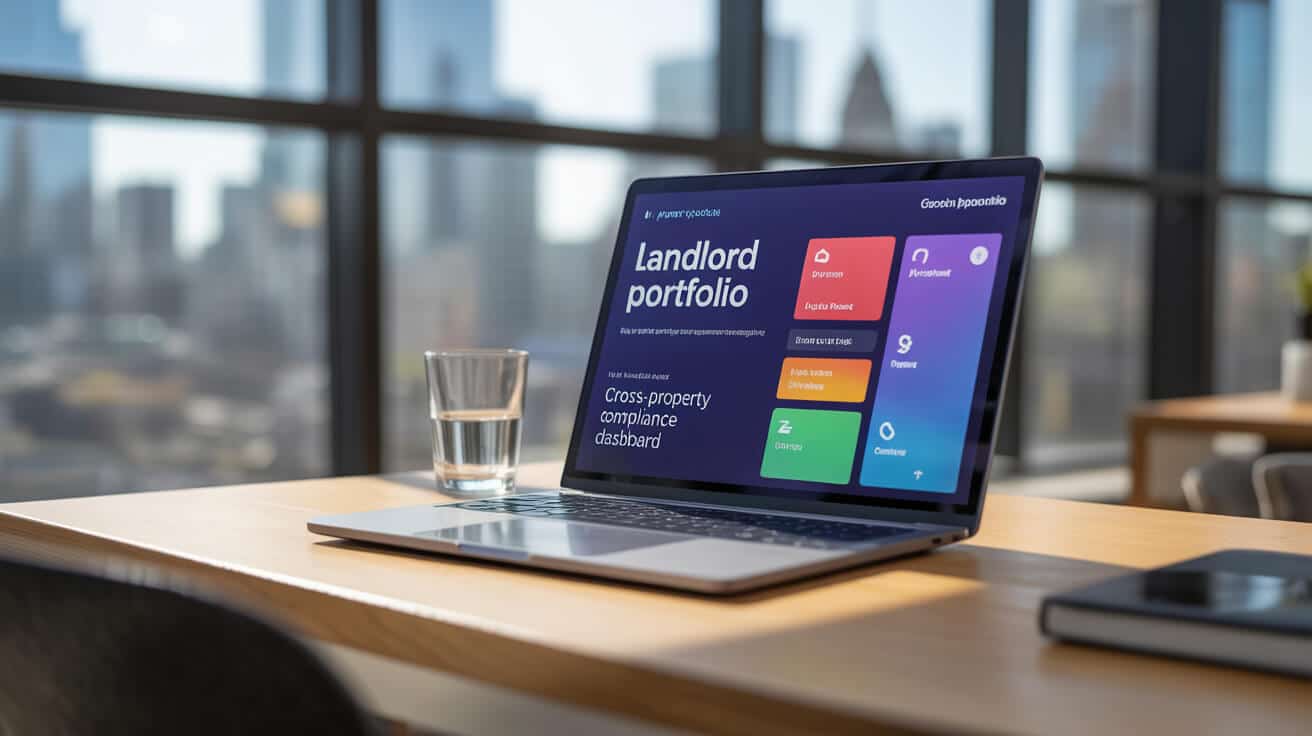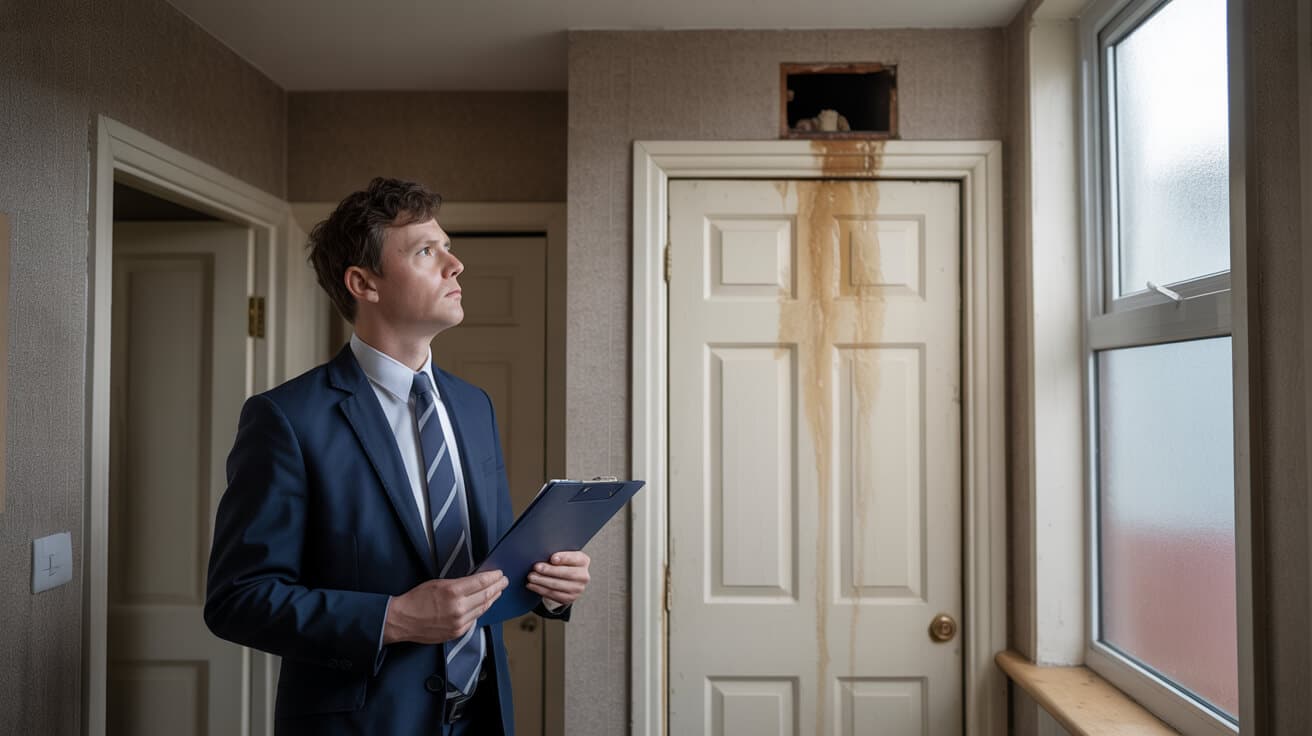 High Traffic Areas Choosing Durable Flooring And Decor For Student Lets
High Traffic Areas Choosing Durable Flooring And Decor For Student Lets

Are You Losing Money on Repeat Repairs in Student Let High-Traffic Areas?
Most landlords in the student let market know the pain: high-traffic zones like hallways, lounges, and kitchens wear out fast. Cheap flooring or quick-fix paint saves a few quid on day one, but this “minimum viable” strategy quickly turns into an expensive treadmill. Scuffed floors, lifting edges, and constant retouching cause endless complaints, eat up your profits, and damage your property’s reputation. Instead of stable, predictable income, you get surprise costs, frustrated tenants, and those dreaded void periods—right when demand is highest.
How you finish high-traffic areas sets the tone for your bottom line and your stress level.
Here’s the reality: if your property is known for recurring repairs or shoddy presentation, word spreads. Students and letting agents compare notes online. You might win a tenant with a shiny refurb, only to lose them (and the next one) when that bargain carpet frays in under a year. Worse, each emergency repair equals time off the market and missed rent—often at the most inconvenient moments, like exam season or group move-ins.
What if you could break that cycle? The smart move is not spending on gold-plated everything—but choosing the right durable options up front. Doing it once, doing it right, and watching stress and cost drop every year after.
Why Does Budget Flooring and Paint End Up Costing More Over Time?

Choosing the cheapest option almost always backfires in the busiest parts of a student HMO. It’s understandable—squeezing margins feels smart, especially when rents are under pressure. But the numbers tell a different storey: low-cost vinyl and thin carpet in communal areas are replaced every 18–24 months on average in UK student properties (powerhousehcs.com). Factor in cleaning, urgent call-outs, and rushed repairs, and the cost spiral is baked in from day one.
Bargain carpets or budget vinyl in HMOs routinely fail within two years, causing landlord headaches and lost lettings. ([nrla.org.uk](https://www.nrla.org.uk/news/what-flooring-is-best-for-student-accommodation?utm_source=openai))
Every time you go cheap, you lose time on scheduling, chase trades for rush jobs, or risk letting agents recommending another property over yours. The magic is in recouping the initial extra spend over multiple tenancies: quality flooring might cost double upfront, but if it lasts four, five, or six cycles without drama, your ROI leaps. It’s not just materials, either—better finishes lower frequency of voids and cut complaints, boosting tenant satisfaction and reviews.
Here’s the kicker: these “hidden costs” don’t just eat margin—they slow your growth. The less time and cash spent firefighting per property, the more you can actually expand your portfolio.
What Flooring Solutions Actually Last for Student HMOs?

Durability in student rentals isn’t just about what looks good on inspection day—it’s about surviving years of muddy trainers, spills, and parties without falling apart. There’s a reason professional landlords and managers now specify the following options for heavy-use areas:
Luxury Vinyl Tile (LVT): Looks Like Wood, Works Like Armour
LVT delivers ten to twenty years of service, shrugs off water, and handles hard knocks. Cleaning is simple, stains rarely stick, and plenty of trade-grade options carry extensive wear warranties. You get the visual appeal of wood or tiles, plus real performance—and you avoid the endless complaints over loose planks or frayed edges. In student kitchens and corridors, LVT is pound-for-pound the winning choice.
Trade-Area Laminate (AC4+): Affordable, Tough, Reliable
Not all laminate is created equal. AC4 (or higher) trade spec boards are built for busy environments—think communal lounges and bedrooms. The right instal resists edge lift, copes with chair drag, and doesn’t crumble at the sight of furniture. Avoid in wet zones, but everywhere else, AC4+ holds up and pays for itself with lower callouts and happier tenants.
Porcelain or Ceramic Tiles: Worry-Free in Wet Zones
Kitchens and bathrooms are a war zone for flooring. Spec R10+ slip-rated porcelain or ceramic, and you’re buying a material that’s practically immune to moisture and can be cleaned deep at each changeover. These finishes also keep insurers happier and slash your ongoing risk.
Flooring Durability Table
The following shows just how long these materials can realistically last before needing replacement:
| Flooring Type | Expected Lifespan | Best Locations |
|---|---|---|
| LVT (Commercial Grade) | 10–20 years | Hallways, kitchens |
| AC4+ Laminate | 3–5 years | Bedrooms, lounges |
| Porcelain/Ceramic Tile | 10+ years | Bathrooms, kitchens |
| Budget Vinyl/Carpet | 1–2 years | Short-term, low-wear |
Investing once at the start means you stop bleeding cash on constant repairs—freeing you up for real upgrades and better tenants.
How Do You Manage Noise and Reduce Complaints in Student Let Properties?

Every landlord knows: more students per house equals more footfall, more dropped objects, and—almost inevitably—more noise complaints. Thin flooring and cheap underlay act like amplifiers, sending every sound up and down the building. Quiet floors are a competitive advantage. Students want sleep. Neighbours hate party-season basslines. You need a solution that keeps everyone onside—without costly post-tenancy dramas.
Here’s what works:
- Instal acoustic underlay beneath LVT or AC4+ laminate: in your heaviest zones. This cuts footstep and impact noise by 15–40% versus standard underlays.
- Choose floor products tested for dB reduction in multi-occupancy buildings.:
- Get installation right: gaps or poorly set boards lead to creaky zones (and more complaints).
Noise is the biggest pain point in high-occupancy lets—investing in acoustic-rated flooring and quality underlays yields immediate returns in tenant happiness and fewer complaints. ([forbo.com](https://www.forbo.com/flooring/en-uk/inspiration-references/making-spaces-into-places-blog/multi-unit-housing-covid/p6l6ou?utm_source=ope))
This isn’t about big tech upgrades; it’s about remembering that sound peace is worth nearly as much as visual appeal in this market. Solve for noise now, and you’ll rarely need to chase it again.
How Can You Safeguard Against Spills, Moisture, and Costly Hidden Damp?

Student living guarantees spills, leaks, and the occasional over-enthusiastic “deep clean” gone wrong. Water is the silent killer for cheap flooring products—it causes expansion, delamination, and sometimes even hidden rot. Repair costs multiply if you ignore moisture proofing from the start.
The best line of defence:
- Use true wet-rated LVT or porcelain in kitchens, bathrooms, and by entrances.:
- Check that installation includes proper sealant and expansion gaps.:
- Get photographic evidence and documentation.: This matters for future insurance and dispute resolution.
Porcelain and LVT are virtually immune to student lifestyle damage—stand up to spills, leaks, and easy deep cleans. ([nrla.org.uk](https://www.nrla.org.uk/news/what-flooring-is-best-for-student-accommodation?utm_source=openai))
Don’t be tempted by “water-resistant” claims on bargain laminates or stick-down vinyl. Only materials actually rated for wet use deliver long-term savings and make re-letting between tenants smoother.
Is Your Paint and Wall Finish Actually Suitable for Student Traffic?

A bold colour or quick coat of bargain emulsion might pull in viewings, but walls in student lets face serious abuse—moving day bumps, sports gear, and blue-tack artwork take their toll. Standard “washable” paints quickly show up patchy, especially after several scrubs. The solution is counterintuitive: pay slightly more for “scrubbable” or trade-rated paints in practical tones.
Benefits include:
- Cleaner look after each scrub, fewer full redecorations:
- Neutral mid-tones hide small marks and broaden appeal:
- Less time lost at turnover, better move-in impressions:
And where you know damage will happen—corridor corners, study desks—consider fitting kickboards or clear acrylic wall guards. The initial outlay is small, the savings on headaches are huge.
Specifying a landlord-grade scrubbable emulsion dramatically reduces routine redecorating—fewer spot repairs and less time lost between tenants. ([landlordzone.co.uk](https://www.landlordzone.co.uk/property-management/what-s-the-best-type-of-paint-for-rental-properties/?utm_source=openai))
This approach means you’re not just managing wear—you’re building a reputation for doing it right, and letting agents take note.
Do Compliance, Certification, and Warranties Really Matter for Flooring and Décor?

Absolutely—especially in the UK’s tightening regulatory environment. Fitting products without BS EN certification or commercial/landlord grade can leave you on the hook for failed insurance claims and rejected repair requests. It only takes one material to slip through the net to invalidate a warranty or trigger a dispute.
Smart property owners:
- Insist on accredited products with detailed installation and warranty docs.:
- Work with contractors who provide photo logs and sign-offs.:
- Retain all receipts and specs for compliance checks.:
Durable, specified flooring reduces maintenance headaches, driving positive reviews and tenant retention in professional HMOs. ([powerhousehcs.com](https://powerhousehcs.com/blog/best-flooring-for-student-housing/?utm_source=openai))
A quality installer won’t just hand over an invoice—they’ll give you a full compliance pack, making insurance and agent checks frictionless at every tenancy changeover.
What Happens During a Professional Flooring & Decor Survey from All Services 4U?

Booking an expert survey means real control over costs and reliability. When All Services 4U assesses your property, you get more than a shopping list—you get a tailored plan for peace of mind.
Expect these steps:
- Detailed wear, installation, and compliance check on existing floors and décor:
- Moisture, slip, and hygiene risk assessment by room:
- Wall finish and colour analysis for practical, marketable upgrades:
- Sound and vibration mapping for noise-proofing improvements:
- Environmental evaluation with green upgrade options:
- Regulatory, photographic, and warranty documentation for each recommended change:
Results are delivered as an action plan: what to do now, what can wait, and where each pound returns highest. No guesswork; just a path out of the repair loop and towards higher, steadier profits.
Thousands of HMOs have transitioned to long-life materials, saving landlords ongoing admin and improving tenant reviews. *(Industry Survey)*
Peace of mind is in the process: you learn where you’re exposed, get fix paths, and can finally stop worrying over what’s waiting in the next turnover.
Book All Services 4U Today for Lasting Upgrades — Protect Your Income and Your Time
Ready to step off the costly repair treadmill? Book a survey or ask for a quote from All Services 4U. We’re trusted for our deep experience in student and HMO property—delivering fit-outs that handle real traffic and real tenants, not just quick wins on paper. Every job comes with photos, certificates, and full regulatory sign-off, so you breeze through agent checks and insurance renewals.
If you want to secure your income and reputation—and spend less time worrying about callouts or voids—take this as your sign. Landlords who prioritise the right finishes are the ones who grow their portfolio, sleep at night, and get the best tenants returning every year.
Shortcuts in finish always cost more in the long run. Invest once—protect your time, your income, and your reputation.
Hector Gauge’s Insider Checklist for Landlords
🛠️
- Porcelain tile: A bigger investment upfront—worth it for a decade of low-maintenance, ideal for kitchens and hallways.
- AC4+ laminate: Instals quickly, lasts 3–5 years in bedrooms—just keep it dry.
- Commercial LVT: Stands strong against almost anything students throw at it—even in wet rooms.
- Scrubbable paint: Always use landlord-grade in subtle mid-tones; scrub off marks, redecorate half as often.
- Slip-resistant coverings: Non-negotiable in wet areas; keeps tenants safe and makes inspectors happy.
🛠️
Frequently Asked Questions
What flooring advantages do successful student landlords leverage to reduce void periods and disputes?
High-durability flooring separates top-performing HMOs from properties caught in endless repair and re-let cycles. When you prioritise proven commercial LVT, AC4+ laminate, or slip-rated porcelain, you sidestep the spiral of lift-prone vinyl or cheap carpet—known triggers for recurrent complaints and costly downtime. Student rentals endure more dragging, spills, and deep cleans than nearly any other sector, so robust floors are a silent asset: they prevent delayed tenancies, streamline deposit returns, and draw in new cohorts every year without drama.
You don’t compete in reviews or speed of turnaround—you win the invisible daily battles where your property quietly resists the wear and tear that sinks your rivals.
What’s at risk with “good enough” floors?
Subpar floors degrade fast, leading to poor reviews, prolonged vacancies, and growing reputational drag. Year-on-year, cost-conscious choices become liabilities as small repairs multiply and insurance requirements tighten.
Who gains the most?
- Multi-property managers determined to scale operations, not patchwork repairs.
- Landlords with limited time, looking to maximise margins by cutting repeated emergencies.
- Letting agents seeking predictable tenant satisfaction and fewer mid-term callouts.
- Compliance-focused facilities managers who value failsafe audit trails.
Switching to high-spec materials isn’t just cost-effective; it’s your best insurance against the hidden churn that thrashes rental yields and team morale.
Which flooring systems actually deliver on longevity and rapid repair for student houses?
True resilience comes from systems designed for high-traffic zones, modular repairs, and water resistance—not just surface shine. LVT (luxury vinyl tile), AC4/AC5-class laminate, and R10–R12 slip-rated porcelain have earned long-standing reputations in schools, retail, and healthcare. Applied to student housing, these materials withstand bulk cleaning, frenzied move-outs, and surprising spills.
| Flooring Solution | Expected Service Life | Water Resistance | Easy Repair? | Target Spaces |
|---|---|---|---|---|
| LVT | 10–20 years | Excellent | Full modular | Lounges, halls, kitchens |
| AC4/AC5 Laminate | 4–7 years | Good (dry-only) | Modular | Bedrooms, living rooms |
| R10 Porcelain | 10+ years | Best | Partial | Kitchens, bathrooms |
| Rental-grade Carp. | 1–2 years | Low | No | Short lets only |
Why do these materials outperform standard options?
- They’re warrantied for years of impact, moisture, and drag—not just showroom looks.
- Sectioned, click-fit formats enable fast spot-replacements after tenancy damage.
- Cleaning regimens for these surfaces match high-volume HMO cycles—cutting labour without sacrificing hygiene.
Landlords using these choices report callout rates falling as much as 40%; key letting agency data from 2023 confirmed faster turnovers and reduced voids compared to sites using “domestic-grade” finishes.
Can you improve finish quality for student lets without overshooting your budget?
Yes, if you invest in what outlasts, not what merely fills a gap now. Budget-conscious upgrades target wear hotspots—entrances, communal kitchens, main hallways—where the stress is highest. Installing LVT or hard-wearing tile in these spaces slashes redecorating and cleaning costs for years ahead. Cost can be reined in by using durable laminate or cost-effective commercial carpet tiles in low-traffic bedrooms. When you opt for high-scrub paints or washable wall panels, cleaning between tenants becomes a 10-minute reset, not a full repaint.
| Area Priority | Smart Material Choice | Typical Payoff |
|---|---|---|
| Entry/hallway action | Modular LVT, resin tile | 5–10 year fit-out, 1 callout/yr |
| Kitchens/bathrooms | R10+ tile, vinyl plank | Water/stain immunity, fewer leaks |
| Bedrooms | AC4 Laminate, carpet tile | Stain spot-repair, quieter use |
| Communal lounging | Commercial LVT, timber | Reduced furniture marks |
Investing here doesn’t just pay for itself—it restores your team’s weekends, earns better reviews, and ends the cycle of late-night emergency repairs. In 2024, UK HMO operators saw void periods drop 18% on average after adopting this “targeted upgrade” approach (Source: SLOM Group, April 2024).
How do cut-rate materials and DIY shortcuts undermine both compliance and property ROI?
Budget flooring and amateur instals might appear to save money, but they court disasters visible only after students move in. When vinyl edges lift, seams split, or cleaning leaves permanent stains, you risk breaching the Homes (Fitness for Human Habitation) Act and local HMO codes—both now tightly enforced by councils and insurers. Insurance refusals and angry tenants follow close behind. Extended downtime piles up as “quick” repairs fail one after the next, damaging your reputation and raising costs far more than any initial “saving.”
The shortcut costs double: tenants lose trust, and you get stuck with the repair bill and compliance fallout.
Typical pitfalls seen in 2022–24 audits:
- Water-swelled subfloors and black-stained vinyl in shared kitchens voiding landlord insurance.
- Missing fire or slip certification on cut-price materials flagged during licencing checks.
- Post-cleaning delamination or VOC spikes causing reinspection failures and deposit disputes.
Landlords using All Services 4U benefit from fully compliant installations, with digital records and trade warranties indexed to every property—year on year, this alone drops remediations and insurance wrangles.
What are proven methods to make décor and surfaces survive a full tenancy cycle (and beyond)?
Decade-long experience shows: resilience and modularity matter more than style fads. Use commercial LVT or tile in spill zones, high-scrub or peelable coatings for walls, and snap-in carpet tiles in bedrooms. Swapable sections mean stains or damage never force a full-room redo—just replace the affected panel. Pinboards, wall bumpers, and entry mats are low-cost armour; tough furniture and fixings (polycarbonate, powder-coated steel) outlast both parties and tenants who move in.
| Upgrade Element | Smart Material/Method | End Result |
|---|---|---|
| Wall finishings | Scrubbable paint, vinyl | Survives cleaning, fast refresh |
| Floors | Modular LVT, high-grade tile | Quick repairs, fits next cohort |
| Fixtures | Metal/polycarbonate | Resists daily knocks/marks |
| Décor extras | Mats, bumpers, pinboards | Protects, lowers cleaning spend |
50% fewer disputes and 30% lower redecorating frequency were reported when modular systems replaced ‘one-piece’ floors in 2023–24 letting agency studies.
All Services 4U standardises these upgrades, scheduling routine checks and replacements so you don’t have to chase failures or re-learn the same lesson each term.
Which regular maintenance steps actually extend the lifespan of student HMO flooring and finishes?
A diligent but simple schedule outperforms haphazard deep-cleans by a mile. Begin each tenancy with a digital “move-in” record: photos, warranties, care guides. At turnover, run a brisk seam/damp/wear check on all high-traffic floors. Document every finding—most disputes and emergencies vanish when evidence is clear and response is fast.
| Maintenance Moment | DIY Task | Pro Service | Outcome |
|---|---|---|---|
| Weekly | Check spillage/seams | N/A | Quick intervention prevents decay |
| Changeover | Photo log, spot repair | All Services 4U survey | Issues solved before claims/disputes grow |
| Annual | Cleaning review, check docs | Pro compliance check | Insurance and licencing risk reduced |
A scheduled All Services 4U inspection goes “under the surface”—using moisture metres, edge probes, and compliance checklists unavailable to most landlords. This not only prevents hidden decay, but also removes stress from licencing, renewals, and insurance events.
What makes All Services 4U and Hector Gauge a “set-and-forget” solution for student let upgrades?
All Services 4U offers more than one-off repairs: you gain a trade-certified, digitally tracked partner looped into every stage—material selection, fit-out, tenancy change, and audit support. Hector Gauge personally blends multi-trade know-how, UK code fluency, and a focus on operational insight. With us, every upgrade or fix includes clear documentation and expert advice to prevent issues re-surfacing, protecting ROI and asset value year after year.
The All Services 4U difference:
- Proactive “Hector Check”: Each property surveyed at tenancy changeovers, aligned with insurance and council requirements.
- Trade warranties, compliance sign-off, and digital archive for every fit-out or repair.
- Advice tailored to traffic, cleaning routines, and known HMO risk areas.
- End-to-end resolution—from sourcing through snagging, always logged.
You don’t just outsource maintenance—you secure your timeline, tenant goodwill, and investment returns.
Book an All Services 4U consultation today and watch costly emergencies, void periods, and spiralling complaints fade away. With the right materials and a trusted partner, you move from firefighting to leading the student rental market.



